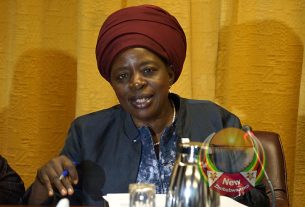[ad_1]
For financial systems, climate risk is unique. The inclusive finance sector has found ways to support a wide range of development priorities to date —from small businesses and agriculture to humanitarian crises. But the various layers of climate risk create new challenges for vulnerable communities, the financial institutions that serve them, and the public and development actors who support the sector.
Communities facing low climate risks, such as seasonal droughts or flooding in known hotspots, may be able to manage them through market-based solutions. For example, effective insurance markets can pool and transfer risk, whilst credit markets can provide loans for adaptation investments. The market-building tools available to the public and development sectors to support these solutions are already well-established. At the other end of the spectrum, more vulnerable communities that are facing more severe, catastrophic climate risks require strong public commitment, including social safety nets that protect the most vulnerable, which is also a relatively well-known space.
However, between these two ends of the spectrum, there is a vast range of climate risks and potential responses from private and public actors that the sector is yet to fully understand and act upon.
A framework for smarter climate finance decisions
Gaining a better understanding of this space is critical for making meaningful progress in climate adaptation and resilience building. Governments and development funders know that they need to do more to support climate adaptation, but often lack guidance on where they can make the biggest impact. In a new development paradigm, they also need to make their money work even harder to catalyze investment from the private sector.
This requires a systematic approach that is tailored to the range of risks and vulnerabilities faced by customers and the financial service providers (FSPs) that serve them – from fostering inclusive, climate-ready markets to mobilizing the private sector, to protecting those most vulnerable.
CGAP’s new framework for strengthening financial systems for inclusive climate adaptation finance shows how governments and development funders can design interventions that are additive, catalytic, and ultimately more effective in enabling climate-responsive financial services in different risk and vulnerability contexts. It lays out various disparate activities to make financial systems inclusive, climate-resilient, and climate-responsive.
Operationalizing the framework
Figure 1: Three supporting roles for inclusive, climate-resilience, and climate-responsive financial systems
Across the three roles set out in Figure 1, the framework identifies six entry points through which governments and development funders can support climate-responsive finance:
- Capital: Facilitating access to affordable, patient, and risk-tolerant capital for inclusive FSPs.
- Climate risk and data: Strengthening the climate risk data ecosystem and building FSPs’ capacity to use and translate it into strategy and operations.
- Product development: Supporting the development of customer-centric products that support climate adaptation and resilience.
- Policy: Creating a policy and regulatory environment that reduces barriers and incentivizes investment in climate adaptation and resilience.
- Social protection: Ensuring protection for the most vulnerable populations through climate-adaptive social protection.
- Market coordination: Facilitating coordination and dialogue among stakeholders from various sectors.
More concretely, a tailored and systemic approach requires a diagnostic process that identifies gaps and effective interventions in a specific market. We tested our framework as a diagnostic tool in Ghana and Bangladesh, both of which are highly exposed to climate risks, but have different risk profiles and financial systems. In Bangladesh, recent experience with climate disasters, a strong policy environment for green finance, and extensive microfinance coverage highlighted entry points around guarantees (to de-risk investments in adaptation) and climate-smart product innovation.
In Ghana, limited access to safety nets for the most vulnerable, low climate risk awareness, and lack of investment in climate-resilient assets and practices point to opportunities in social protection, customer awareness building, catalytic capital, and climate risk and data. In both countries, there was a lack of coordination between the various stakeholders.
Initial findings
The diagnostics demonstrated common challenges that prevent vulnerable communities from accessing climate-responsive finance, in particular the resistance of FSPs to serve them and the different types of financial and nonfinancial support required to enable and motivate FSPs to do so.
Some of the common findings, which are applicable to most markets, were:
- DFIs can make more direct investments to demonstrate and scale adaptation solutions;
- Climate funds need to derisk and reduce the cost of domestic lending for locally-led adaptation;
- Disaster risk financing instruments are needed not just for governments, but to provide liquidity to FSPs and their customers when crises strike; and
- Social protection programs need to commit to protecting the most vulnerable from climate risk by bolstering their resilience ahead of time, not just by responding after a shock.
However, it’s not all about money: a number of other actions are also needed. First, weather and climate data have to flow into the financial system so climate risks can be measured and priced. Second, financial products need to be tailored to customers’ climate resilience and adaptation needs. And third, policies need to support climate-responsive products and business models, and the ecosystem for climate adaptation finance needs to be built and reinforced.
Ultimately, it will take thoughtfully designed approaches to allocate limited public funds where they are needed most to unlock private sector investment and protect the vulnerable. Financial systems, and the governments and development funders that support them, will need to evolve. This framework suggests a new way of thinking about what those approaches may be in different risk and vulnerability contexts.
[ad_2]
Source link


